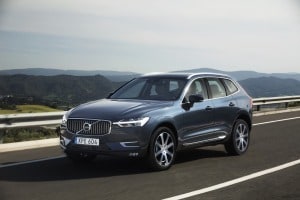Millennials In Reverse

After years of lackluster performance, car buyers aged 18 to 34 bought relatively more cars than older buyers in 2012, gaining share even as the overall market grew 13 percent. But the pace of sales by these Millennials slowed again in 2013, reversing nearly all 2012 share gains. A slowdown in new jobs for young adults, while the job market for older workers expanded, contributed to the turn around. Plus, the weaker labor market, combined with higher prices and tight supply in the housing market, meant many fewer Millennials formed new households this year, minimizing another key factor from 2012's car sales growth. Meanwhile, wealth effects from a strong stock market and rising home values — a key growth driver for the market overall — likely contributed less to motivating new car purchases by Millennials than by older buyers.

Equal Opportunity Share Losses
From 2007 to 2011, the share of sales to car buyers aged 18 to 34 fell nearly 30 percent. Then, when many industry observers verged on writing off this generation as uninterested in cars and driving, the economic tide turned in 2012 and Millennials flocked to buy new cars, recovering over a quarter of their share losses and doing so in a rapidly expanding auto sales market. This surge was short-lived, however. In the first eight months of 2013, the share of new car sales to Millennials dipped almost to 2011 levels. Although the breakdown of sales by income among Millennials remained fairly stable, Millennial buyers retreated at all income levels, with higher-earning households posting the largest share losses.
Job Market Blues
A weak job market and sluggish income growth are two key factors that kept Millennials away from the new car market during the Great Recession and recovery. Then, improving employment conditions helped spur growth in new car purchases by these buyers in 2012. Jobs for 25-to-34 year olds increased 30,000 per month on average in 2012, with an average of 130,000 added monthly from September to December. Even as labor force participation increased, the unemployment rate for this age group fell, from 8.9 percent in January 2012 to 7.7 percent in December.
Labor market progress slowed in 2013, though. Through August, the older Millennials gained just 4,000 jobs per month on average and their unemployment rate rose to 7.8 percent, even as their labor force participation declined slightly. Meanwhile, after rising 31,000 per month on average in 2012, jobs for younger Millennials dropped 3,000 per month on average in 2013 from January to August. This slowdown in the labor market recovery for Millennials weakened their share of auto purchases.
Putting the Brakes on Household Formation
The Millennials' share of new car sales also grew in 2012 due to the surge in new households. Household formation, the bulk of which comes from young people moving out of their parents' homes or spaces shared with roommates, jumped to 1.4 million net new households per month on average in 2012, after averaging 550,000 per month from 2007 to 2011. New car sales had suffered as Millennials delayed setting up households. Young adults living at home or with roommates typically have less need for their own cars due to the opportunity to share a car with other members of their households, but young adults living on their own are more likely to need their own cars — and more likely to be able to afford them.
Unfortunately, household formation reversed course again this year — averaging just 500,000 net new households per month for the first half of 2013. The weaker job market for Millennials offers one reason for this decline while other contributors come from the housing market. Tight supply of units for both rent and sale held back some households from forming, while others were thwarted by higher rents and home prices and by rising mortgage rates. With fewer new households forming, a number of Millennials were less motivated to buy new cars.
The "Rich" Get Richer
The share losses by Millennials translated into as share gains for older Americans aged 55 and over. The job market for the older Baby Boomers and their older siblings retained more momentum this year than the job market for any other age group, adding an average of 79,000 jobs per month through August. As a result, the unemployment rate for workers 55 and over fell from 6.0 percent in January to 5.1 percent in August. Plus, this older group benefited from a strong stock market and rising home prices to a greater extent than Millennials, due to the larger holdings of real estate and securities by older Americans. These wealth effects played an important role in supporting new car sales growth so far this year.
What The Future Holds
Millennials' car-buying patterns in 2012 and in 2013 both lend support to the theory that their weaker car-buying compared to previous generations stems from economic constraints rather than from a preference to not drive. Plus, what they bought in 2013 continues to suggest that Millennials do see cars as more than a means to get around. Even with their decreased share of overall sales in 2013, Millennials did not slack off on buying luxury and sports cars. The share of Millennial purchases from the luxury segment increased slightly. And, in every income group except the highest ($150,000 and over), aged 25-to-34 Millennials continued to buy luxury cars to a similar extent or more as older buyers with same income. Likewise, in nearly every income group, 18-to-24 year old Millennials continued to purchase a greater share of entry and midrange sports cars than the older buyers. These Millennial buying choices suggest an interest in cars that will translate into more purchases when economic conditions allow, just as in 2012.


The key question is whether the economic recovery will continue to largely bypass many Millennials, causing their share of new car purchases to remain below pre-recession levels. Already the promise Millennials showed in 2012 with respect to new car purchases weakened in 2013 as certain key drivers, including the job market and household formation, slowed. The coming months could bring more of the same if jobs growth remains slow and/or disproportionately favors older workers. For example, employers could cut back on hiring younger workers if fiscal uncertainty — now guaranteed through at least the next debt ceiling and Continuing Resolution expirations in early 2014 — persists. Limited hiring will constrain household formation — already at risk from rising costs and tight supply.
The good news for a Millennial sales revival in 2014 is that the U.S. economy is expected to continue to expand at a moderate pace, with growth increasing during the next two years and downside risks decreasing. If the government can make progress on its outstanding fiscal issues — the key remaining drag on the economy, Millennials could find more job opportunities, enabling them to set up more new households and buy more new cars.
Lacey Plache is the Chief Economist for Edmunds.com. Follow @AutoEconomist on Twitter.





